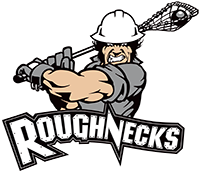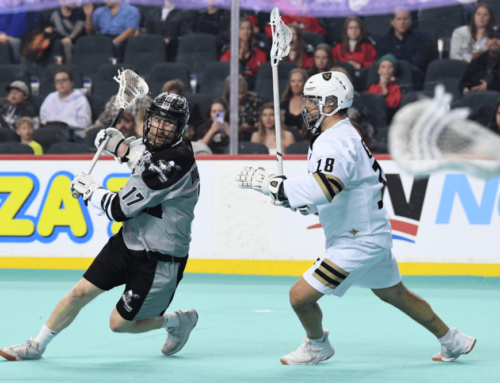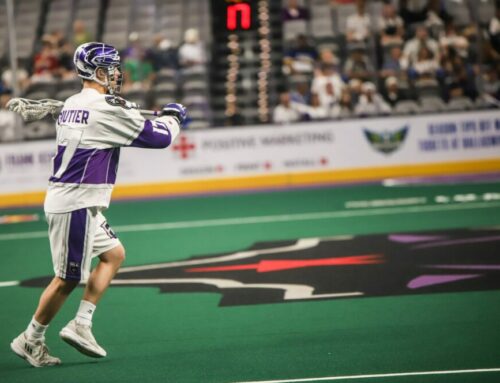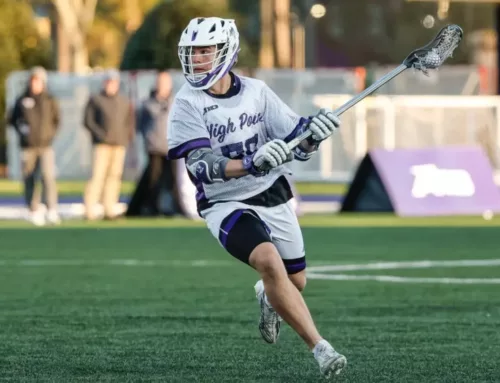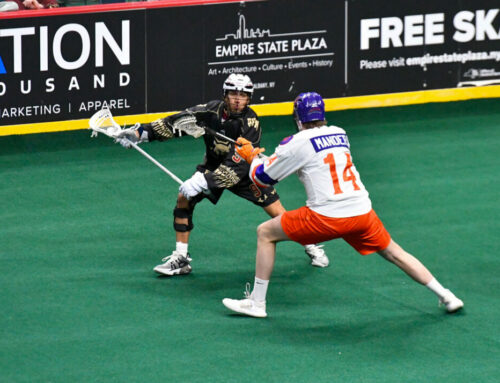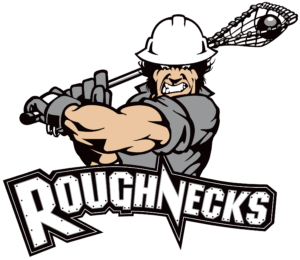CALGARY, AB — Welcome to the Roughnecks Mailbag! I have selected five questions of the many that fans submitted and I will try to answer them as best and as thoroughly as possible.
Let’s get to it!
Q: What is being done to improve your face-off technique and success rate?
Now, since I’m not on the floor taking the face-offs or practicing all the time, I’m the wrong person to speak on this topic. That’s why I went to face-off man Bob Snider to help us understand what is going on.
Snider, the Director of Player Development for Elevate Lacrosse in Calgary teaches the art of face-offs to kids all the time. He has recognized that player’s see an opportunity to make a team by having the ability to take draws.
“I think, from an individual player standpoint, players are knowing that there’s an opportunity for a role on a team taking face-offs, so people are practicing more,” Snider said. “Kids are using YouTube videos or going to face-off camps to get better. In the community, there’s a lot of kids that are eager to try the position.”
There is a very simple process for his Snider to improve: practice and preparation.
“With anything that you do, it’s practice,” explained Snider. “It’s practicing a technique, practicing a move, practicing certain situations. I watch film, watch other guys take face-offs, know my opponent, and knowing how to react in certain situations. As a player, the more you prepare, the better off you’re going to be. I think that just comes with practicing.”
For people starting to work on their face-off game, here is what Snider suggests: “I would just research a couple moves. There are couple techniques you can utilize that are out there and I think it’s important to focus on one move. The equivalent would be an outside shooter practicing outside shots on a daily basis. We’ve got guys on our team that practice a certain shot from a certain area. It would be the same. Practice your move and get it down pat. Work on another move as a back up. Just work on certain situations. Focus on one technique.”
Q: What does it take to be on an NLL team?
Each player takes a different path to the NLL. Some play Jr. A in Canada, while others play NCAA lacrosse in the United States. Some are drafted, others are not.
But there are a few common traits in every professional athlete.
“I think it’s hard work and determination,” said defenceman Scott Carnegie. “I look at my path, I wasn’t drafted, but I stuck with it, had some people who believed in me and just be willing to play any role the team needs. The first year, you probably won’t play every game, but if you be the cheerleader, be the hardest worker in practice, show that talent isn’t everything. Hard work can get you pretty far. That’s been my motto. I’ve tried to balance being a good teammate, a leader, and doing your job whenever you’re called upon.”
Snider doubled down on the idea that hard work will help you reach the top level.
“When it comes to making a roster, you have to work hard and be focused, be in shape, know what you’re getting into, know your opponent,” said Snider. “Be as competitive as you possibly can and at the end of the day if it doesn’t work out, you can sleep at night knowing you gave it all.”
Hard work is important, but Jeff Shattler believes that a love for the sport will help push you to do all the things that are necessary to compete at the top level.
“I would say a lot of dedication, you have to love the sport,” noted Shattler. “You have to sacrifice things outside of the arena and put the work in outside the arena. If you truly love the sport, I think you can excel in the sport. If you give everything that you’ve got, people will notice it.”
Q: What are the most common referee calls and can you give a brief explanation?
Shot Clock Violation: The team in possession is required to take a shot on goal within 30-seconds of gaining possession. Failure to take a shot on goal will result in the 30-seond clock timer sounding a horn. Possession goes to the non-offending team.
Illegal Cross-Check: An illegal cross-check shall be a check on an opponent above the shoulders, below the waist, or on the back.
Illegal Substitution/Too Many Men: If a substitution is made prematurely, the official shall stop the play immediately by blowing his whistle unless the non-offending team has possesion of the ball in which event, the stoppage will be delayed until the ball changes hands.
Over and Back Violation: A loose ball or player with possession of the ball comes in contact with the centreline of the field for any reason other than a shot on goal or the defensive team being the last to touch the ball, it shall be a back-court violation. Possession shall be awarded to the non-offending team where the ball comes to rest with exception of immediately in front of goal.
Q: What do the Roughnecks players like to hear/see from the fans in crucial points during a game?
You know those message’s on the Jumbotron that read, ‘Make Some Noise!’? It’s not just the Roughnecks staff that want you to make noise, the players want you to be LOUD!
“The louder the better,” Shattler insisted. “They all have your back and they want you to succeed. When they’re behind you it gives you a big rush and it helps you out. To have the fans screaming and yelling, especially during the crucial parts of the game, you want them to be on your side and know that they’re there for you.”
When the Riggers score and you go crazy in the stands, they feed off of that energy and it helps keep them rolling.
“I think, especially after our goals, we feed off of that momentum,” said Carnegie. “The louder and the crazier it gets, it’s better for us. Calgary does a good job of that anyways, the fans are awesome, so we have no complaints there.”
It goes without saying that our fans our the best in the league, but the energy that you bring to the building is incredible.
“Energy,” exclaimed Snider. “We feed off of their energy. We have the best fans in the league. They provide us support late in the game when we need that extra boost and we feed off of their energy. We want them to keep rock and rolling for us.”
Q: Why did defenceman Scott Carnegie change his number from 22 to 24?
Despite loving the number 22, Carnegie was forced to change numbers when he arrived in the NLL, but he’s grown to love his new number.
“I wore 22 growing up and it was my football number and I loved that number,” explained Carnegie. “When I came to Calgary it wasn’t available because Mouse (coach Malawsky) was wearing it, so I wore 24 for two seasons and we won a Cup. I wore 24 in summer lacrosse and we won two Mann cups so I have a good connection with that number.”
The reason for the switch was simple.
“I changed it back to 24 because the only time I’ve won a championship I was wearing 24,” admitted Carnegie.
Let’s hope that his new number brings the Roughnecks some luck as they head into a deciding final game of the regular season.

